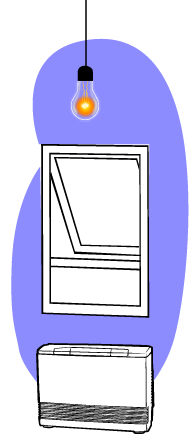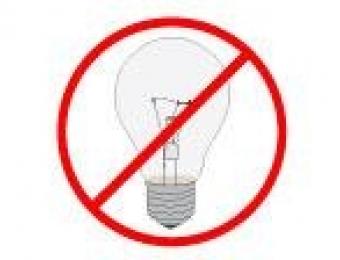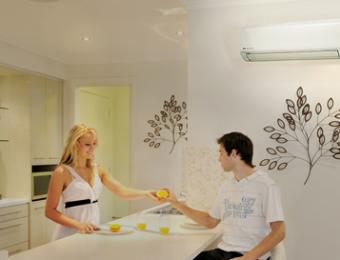
Lighting
Lighting is generally an inefficient business. The replacement of incandescent globes with compact fluorescent lights (CFL) was a significant step forward in terms of energy efficient lighting, and LED lights represent yet another improvement. Low wattage compact fluorescent globes are a good, energy efficient option for general lighting purposes. Work areas that require high intensity task lighting can use light-emitting diode (LED) lighting. Dichroic halogen lighting should be used sparingly, as it not a very efficient form of lighting, even if it does look good!
Heating
Most electric heaters - especially fan convection heaters, radiant bar heaters and in-slab electric heaters should be avoided if possible, because they're highly inefficient and quite expensive to operate. Reverse cycle air conditioning operating as a heat pump is much more efficient, and rivals natural gas heaters in terms of its energy efficiency and environmental impact.
The use of a ceiling fan can also help, depending on the areas you want to heat - hot air rises, and a fan can direct the heated air downwards, to distribute it evenly throughout the room. Another small device that can help is a heat shifter, which helps to pipe hot air either from one room to another, or from the top of a tall ceiling or stairwell back down to the bottom of the house.
Cooling
Evaporative coolers are very efficient for use in climates with low humidity, although they're fairly ineffective in other climates. Inverter-type air conditioners are the most efficient, because the compressor (most of the energy is used up by this part) runs at a slower or higher speed depending on the cooling requirements, rather than at a single speed.
Ceiling and pedestal fans are far cheaper to run than air conditioners, although they don't technically 'cool' the air like air conditioners do.
A well designed house will take advantage of passive heating and cooling techniques, minimising the need for electric heaters and air conditioners.
Ducted systems
Pushing air through ducts to various parts of the home sucks up energy. Cold air requires more energy than hot air. Choosing the right sizes for ducts is a job for experts. Be aware that dampers for different zones in the house don't technically save energy, unless the system has been designed to compensate for closed dampers. In most cases, closing a damper simply transfers the flow of hot or cool air elsewhere.
Air conditioners with outside air make-up are more efficient than those working on recirculating air, as cooler air can be drawn in as the afternoon temperatures go down.
Insulation, blinds and double glazing
Roof insulation, blinds and double glazed windows are all energy saving measures that can have a significant impact on power bills. The flow of heat into and out of a home is critical -halving the heat that flows in and out of a house reduces power consumption fourfold.





